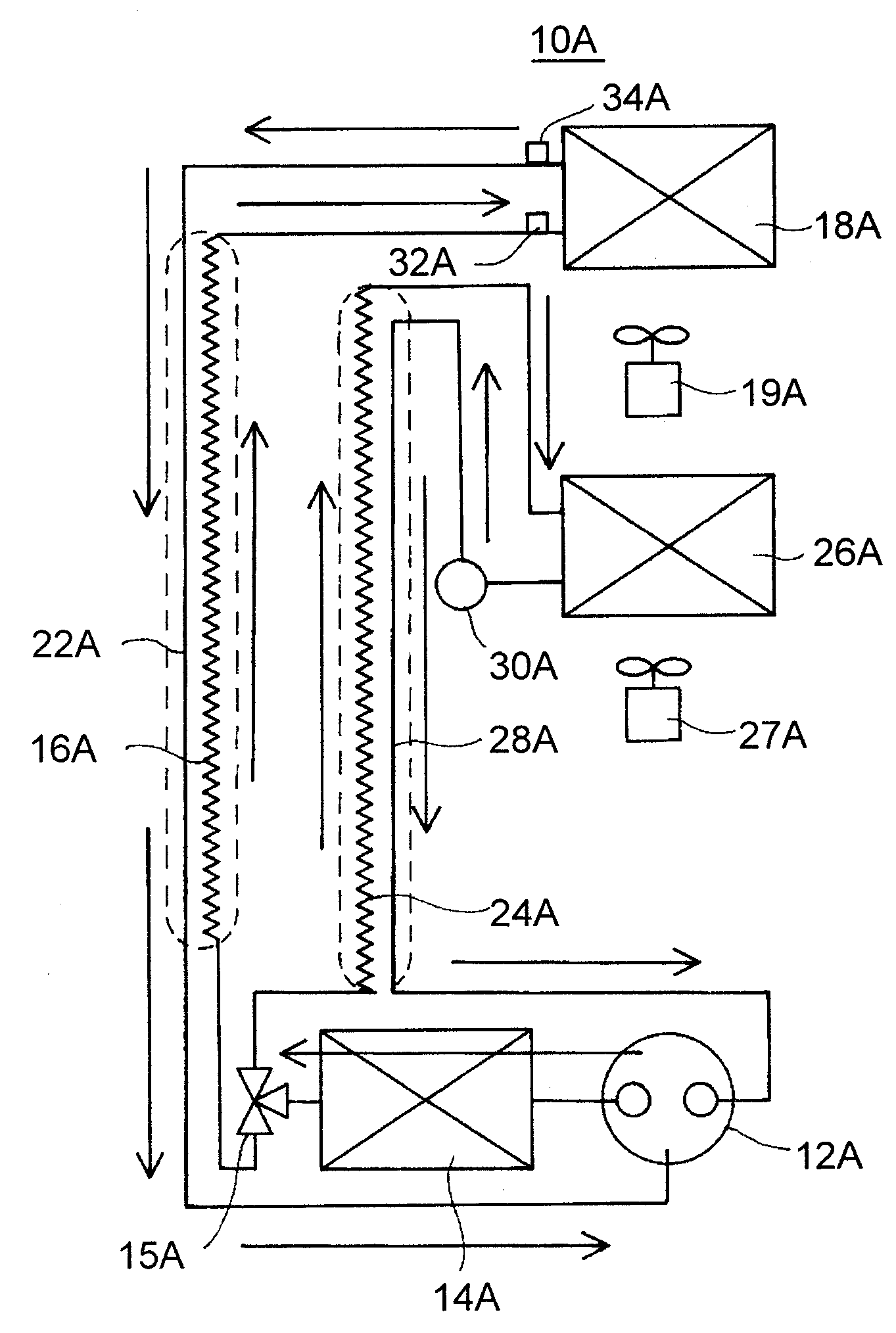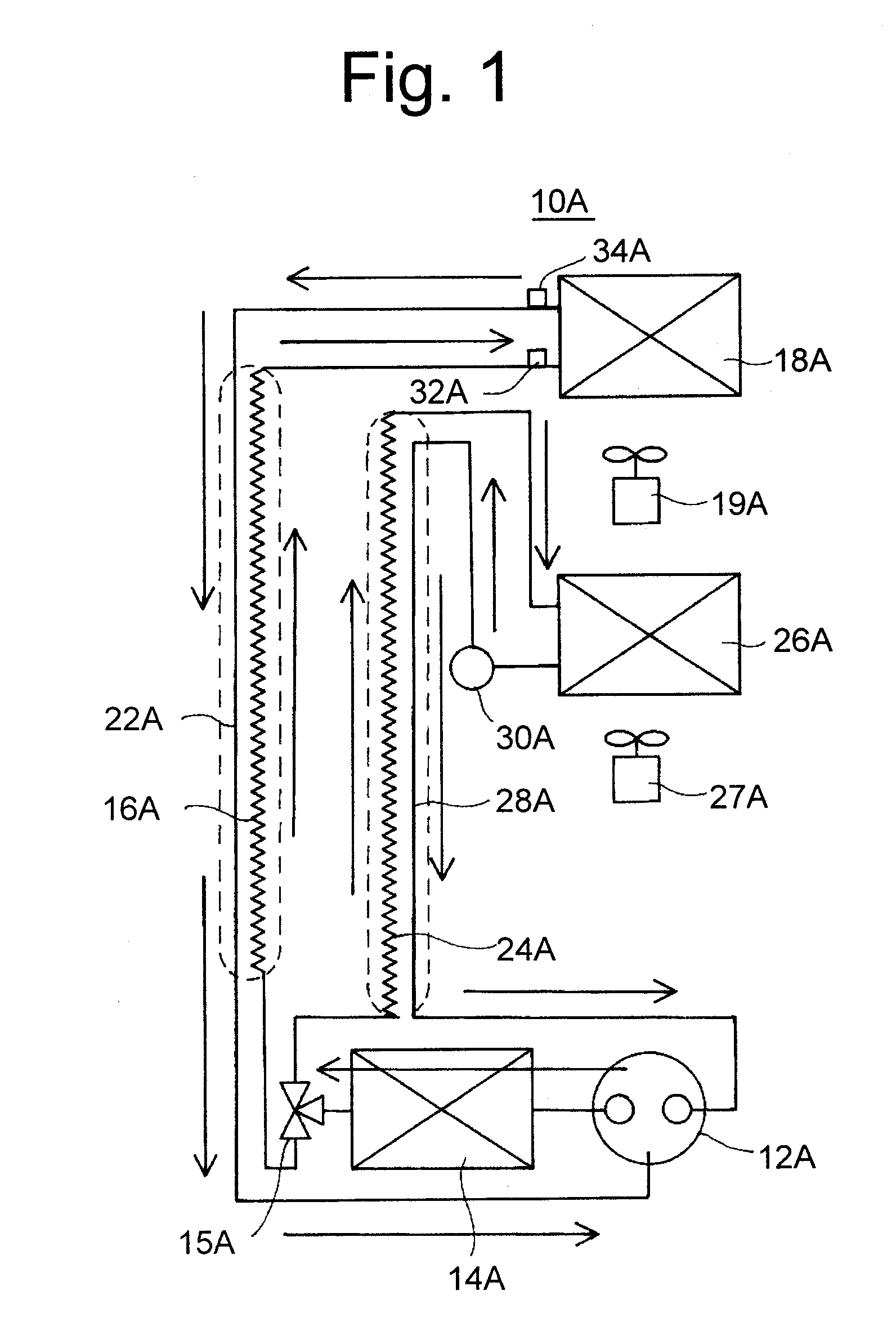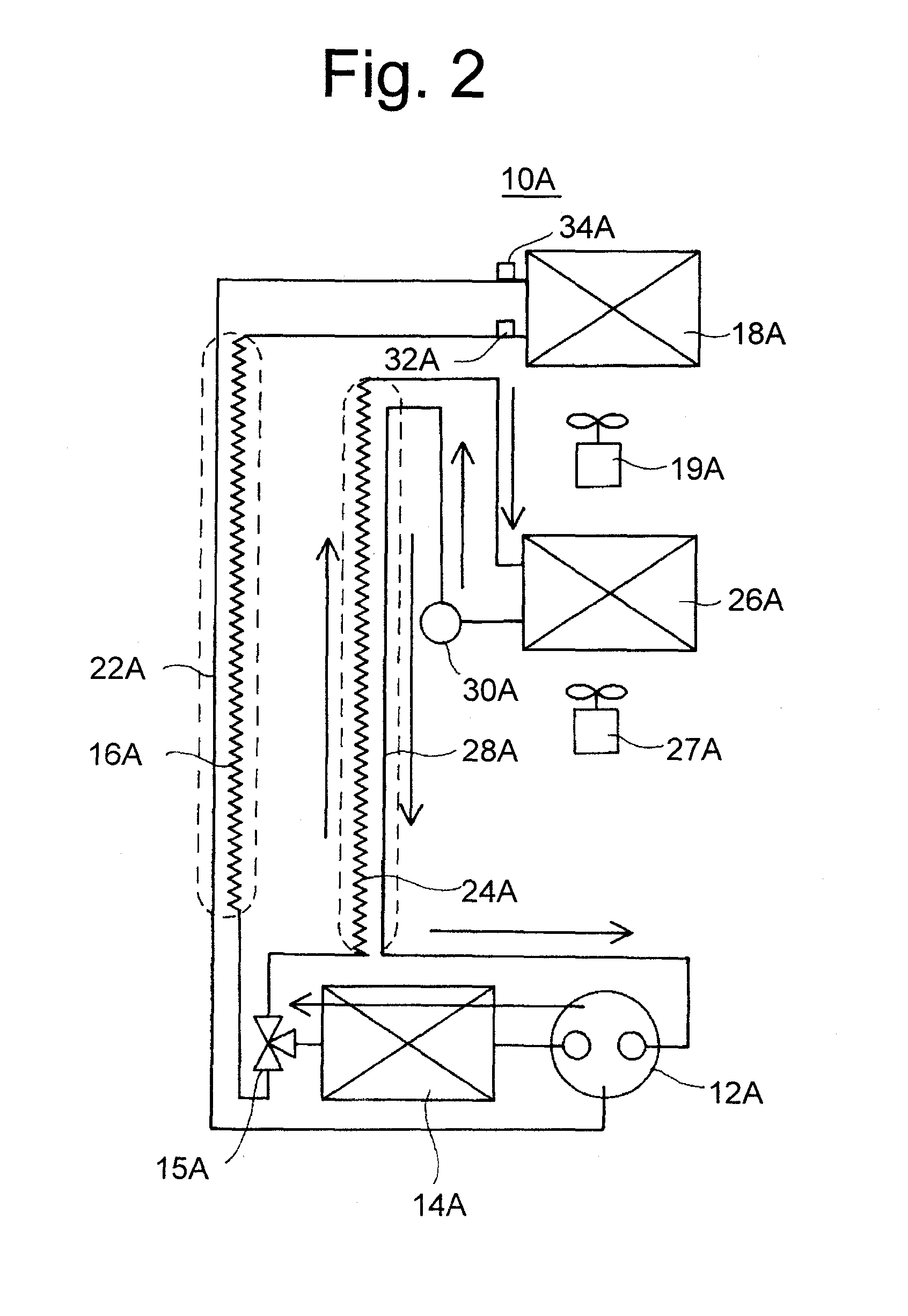Refrigerator
a technology of refrigerators and refrigerators, which is applied in the field of refrigerators, can solve the problems of low relative humidity in the refrigerating chamber, inability to finely set temperature, and inability to improve the efficiency of the freezing cycle, so as to achieve the effect of reducing the flow ratio of refrigerators to one evaporator, reducing pressure loss, and improving cooling efficiency
- Summary
- Abstract
- Description
- Claims
- Application Information
AI Technical Summary
Benefits of technology
Problems solved by technology
Method used
Image
Examples
Embodiment Construction
[0108]Referring now to the drawings, wherein like reference numerals designate identical or corresponding parts throughout the several views, the embodiments of this invention will be described below.
[0109]Firstly, an embodiment of the present invention will be explained with reference to FIGS. 1 to 6.
(1) Structure of a Refrigerator 1A
[0110]Firstly, the structure of refrigerator 1A will be explained by referring to FIG. 3.
[0111]Inside refrigerator 1A, starting from the upper stage, a refrigerating chamber 2A, a vegetable chamber 3A, an ice making chamber 4A, and a freezing chamber 5A are installed.
[0112]In a machine chamber 6A on the back of freezing chamber 5A, a two-stage compressor (hereinafter, referred to as just a compressor) 12A of a capacity variable type is installed.
[0113]On the back of ice making chamber 4A, an evaporator (hereinafter, referred to as an F evaporator) 26A for a freezing chamber for cooling ice making chamber 4A and freezing chamber 5A is installed.
[0114]Fu...
PUM
 Login to View More
Login to View More Abstract
Description
Claims
Application Information
 Login to View More
Login to View More - R&D
- Intellectual Property
- Life Sciences
- Materials
- Tech Scout
- Unparalleled Data Quality
- Higher Quality Content
- 60% Fewer Hallucinations
Browse by: Latest US Patents, China's latest patents, Technical Efficacy Thesaurus, Application Domain, Technology Topic, Popular Technical Reports.
© 2025 PatSnap. All rights reserved.Legal|Privacy policy|Modern Slavery Act Transparency Statement|Sitemap|About US| Contact US: help@patsnap.com



